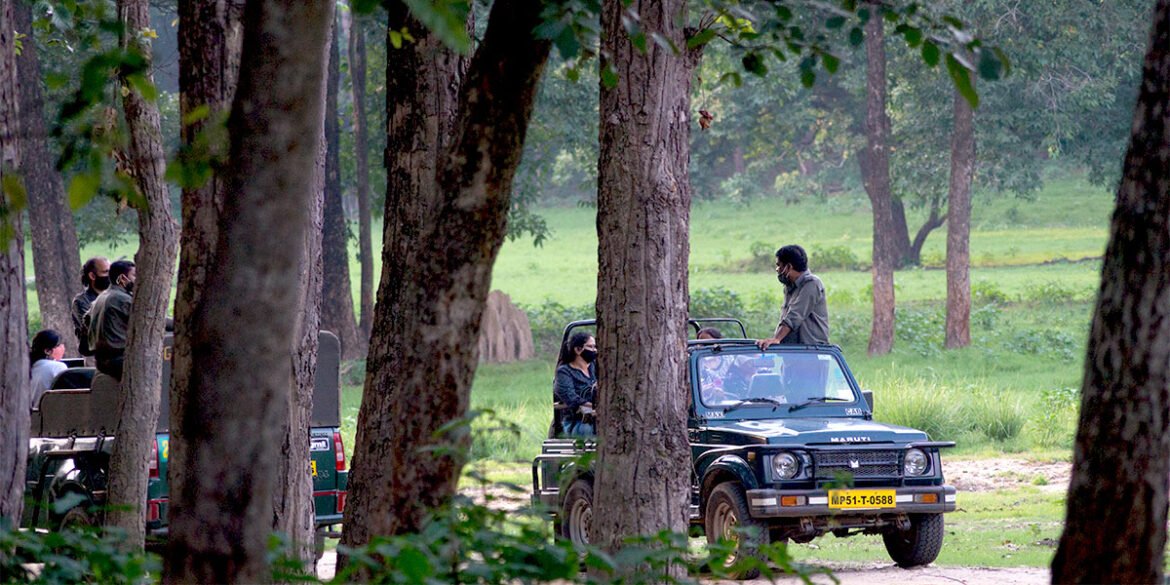India is a paradise for wildlife enthusiasts, with its sprawling national parks and diverse ecosystems offering unmatched opportunities to see the majestic Bengal tiger in its natural habitat. A well-planned tiger safari can be the adventure of a lifetime, but with so many destinations and options, booking the perfect tour requires careful preparation. This guide provides a step-by-step roadmap to book tiger safari tour experience is seamless, exciting, and memorable.
1. Choose the Right Destination
India has several tiger reserves, each with its unique charm and features. Selecting the right destination is the first step to booking a perfect tiger safari.
Top Tiger Safari Destinations in India:
- Ranthambore National Park (Rajasthan): Known for its high visibility of tigers and historical ruins.
- Bandhavgarh National Park (Madhya Pradesh): Famous for its dense tiger population and picturesque landscapes.
- Jim Corbett National Park (Uttarakhand): India’s first national park, ideal for diverse wildlife and birdwatching.
- Kanha National Park (Madhya Pradesh): Inspiration for The Jungle Book and home to rare barasinghas.
- Sundarbans National Park (West Bengal): Unique boat safaris to spot tigers in mangrove forests.
Tip: Research the park’s highlights, climate, and accessibility before making a decision.
2. Decide the Best Time to Visit
Timing plays a crucial role in your safari experience. Tigers are more visible during specific seasons.
- Winter (November–February): Cooler temperatures make for a comfortable safari. Ideal for birdwatching and enjoying lush greenery.
- Summer (March–June): Best time for tiger sightings as they frequent water bodies in the scorching heat.
- Monsoon (July–September): Most parks are closed during this period for breeding and maintenance.
Tip: If your primary goal is tiger sightings, plan your visit during the summer months.
3. Choose the Type of Safari
Understanding the types of safaris available will help you tailor your experience to your preferences.
- Jeep Safari: The most popular option, accommodating up to 6 people, and offers close encounters with wildlife.
- Canter Safari: Larger vehicles for groups, suitable for budget travelers.
- Elephant Safari: Available in limited parks, offering a unique vantage point.
- Boat Safari: Exclusive to Sundarbans, perfect for exploring the mangrove ecosystem.
Tip: Book jeep safaris for a more personalized and immersive experience.
4. Select the Ideal Accommodation
Your choice of accommodation can significantly enhance your safari experience. Most tiger reserves offer a range of options:
- Luxury Resorts: Provide premium services, private safaris, and stunning jungle views.
- Mid-Range Lodges: Comfortable and affordable stays with essential amenities.
- Eco-Lodges: Perfect for nature lovers seeking sustainable and immersive experiences.
Popular Luxury Options:
- Aman-i-Khas (Ranthambore): Tented luxury amidst the wilderness.
- Taj Safaris (Bandhavgarh & Kanha): Combining opulence with wildlife.
Tip: Choose accommodations close to safari entry gates to save time and maximize your safari experience.
5. Book Your Safari Permit
A safari permit is mandatory for entering the tiger reserve. These are limited and can sell out quickly, especially during peak seasons.
Steps to Book a Permit:
- Visit the official website of the chosen tiger reserve or a trusted booking portal.
- Select the date, time slot (morning or evening), and type of vehicle (jeep or canter).
- Provide personal details and upload ID proof.
- Make the payment online to confirm your booking.
Tip: Book permits at least 2–3 months in advance, especially for popular parks like Ranthambore and Bandhavgarh.
6. Hire a Reputable Tour Operator
For a hassle-free experience, consider booking through a professional tour operator. They handle all logistics, including permits, accommodations, and guided safaris.
Benefits of a Tour Operator:
- Expertise in park regulations and safari timings.
- Access to experienced naturalists and guides.
- Customized packages to suit your preferences.
Recommended Operators:
- Wildlife Trails
- Pugdundee Safaris
- Travel Operators for Tigers (TOFTigers)
Tip: Read reviews and verify credentials before selecting a tour operator.
7. Pack the Essentials
A well-packed bag ensures a comfortable and enjoyable safari.
Must-Haves for a Tiger Safari:
- Clothing: Neutral-colored attire (green, beige, brown) to blend in with the surroundings. Avoid bright colors.
- Footwear: Comfortable, closed-toe shoes for walking on uneven terrain.
- Gear: Binoculars, cameras with telephoto lenses, and a power bank.
- Accessories: Sunglasses, sunscreen, insect repellent, and a wide-brimmed hat.
- Documents: Printouts of your safari permits, ID proofs, and booking confirmations.
Tip: Carry a lightweight backpack for ease during the safari.
8. Understand Safari Etiquette
Respect for nature and wildlife is crucial during a tiger safari. Follow these rules to ensure a safe and ethical experience:
- Stay Quiet: Avoid loud conversations or noises that can disturb the animals.
- Don’t Feed Wildlife: Feeding animals disrupts their natural behavior.
- Stay Inside the Vehicle: Stepping out is strictly prohibited for safety reasons.
- Follow Guide Instructions: Trust your guide’s expertise for sightings and safety.
Tip: Patience is key—enjoy the jungle ambiance even if tiger sightings are rare.
9. Plan for Other Attractions
While the tiger safari is the highlight, many parks offer additional experiences:
- Nature Walks: Guided walks to explore flora and smaller fauna.
- Birdwatching: Especially rewarding in parks like Jim Corbett and Kanha.
- Cultural Visits: Explore nearby villages to learn about local traditions.
Tip: Allocate time to enjoy these activities for a more enriching experience.
10. Budgeting and Booking Finalization
A tiger safari can cater to a range of budgets. Consider all expenses, including:
- Safari permits
- Accommodation
- Meals
- Transportation
Example Costs:
- Safari Permit: $15–$30 per person per safari (varies by park).
- Jeep Rental: $50–$100 per vehicle per safari.
- Accommodation: $30–$500 per night depending on the type.
Tip: Opt for package deals offered by tour operators for better value.
Conclusion
Booking the perfect tiger safari tour in India requires careful planning, but the rewards are worth the effort. From choosing the right destination to understanding safari etiquette, each step ensures an unforgettable experience in the heart of India’s wilderness.
So, whether it’s witnessing a tiger’s majestic stride in Bandhavgarh, cruising through Sundarbans’ mangroves, or marveling at Ranthambore’s regal landscapes, a well-organized safari will leave you with memories to cherish forever.







